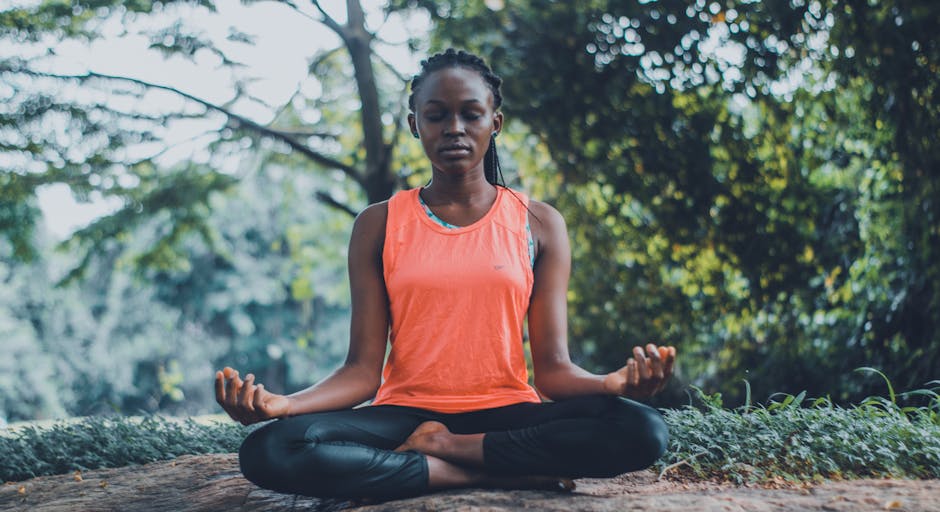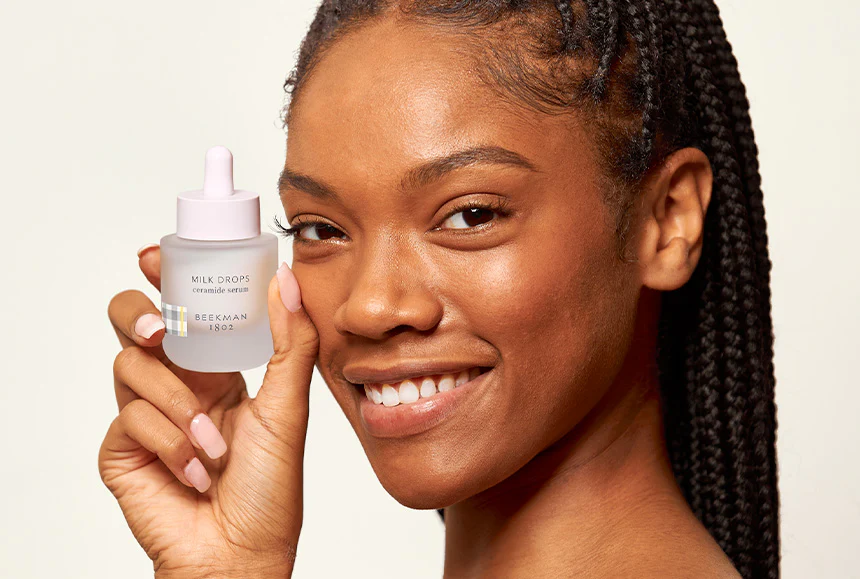Understanding Mental Health and Wellness: Your Path to Thriving
Mental health and wellness is a state that encompasses emotional, psychological, and social well-being, affecting how we think, feel, act, make choices, and relate to others. If you’re searching for mental health resources, here’s a quick guide to get you started:
- Crisis Support: Call 988 Suicide & Crisis Lifeline (24/7, free)
- Self-Assessment: Take a free screening at Mental Health America
- Professional Help: Seek help if symptoms last 2+ weeks
- Digital Resources: NIH Emotional Wellness Toolkit, SAMHSA Helpline
- Community Support: NAMI support groups, peer connections
Mental health and wellness exists on a continuum – you can move from languishing to flourishing through active care and support. About 20% of U.S. adults struggle with a mental health disorder annually, but even those without diagnosed conditions may not be mentally “well” due to stress, loneliness, or other challenges.
The good news? Affordable, effective strategies exist to promote, protect and restore your mental well-being. Small, consistent acts of self-care—like brief walks, quality sleep, and social connection—can have significant benefits for your mood and overall health.

Common mental health and wellness vocab:
What Is Mental Health and Wellness?
Mental health and wellness isn’t just about avoiding illness—it’s about thriving in every dimension of your life. Imagine it as a flowing river rather than a fixed state, with currents that carry you between struggling and flourishing depending on life’s circumstances.
This wellness journey exists on a continuum. On one end, you might find yourself languishing—feeling empty or unmotivated. On the other end lies flourishing—experiencing purpose, positive emotions, and meaningful connections. Most of us naturally drift along this spectrum throughout our lives.
Resilience stands as your anchor in this journey. Think of it as your emotional immune system—the stronger it is, the quicker you bounce back when life knocks you down.
Your mind and body are having a constant conversation. Scientific research on the mental-physical link shows that when your mental health suffers, your body often speaks up through physical symptoms. Likewise, physical health challenges can affect your mental landscape.
At Beyond Beauty Lab, we’ve always believed that true radiance starts from within—your glowing skin often mirrors your inner well-being.
Mental Health vs. Mental Wellness: Key Differences
These terms often get used interchangeably, but they represent different aspects of your well-being:
Mental health refers to your overall psychological condition, including diagnosed disorders. The DSM-5 identifies nearly 300 mental disorders across seven categories—from depression and anxiety to more complex conditions.
Mental wellness focuses on the positive dimensions of your psychological functioning. The World Health Organization defines it as a state where you can realize your abilities, cope with normal stresses, work productively, and contribute to your community.
Here’s a helpful way to understand the distinction: mental health ranges from illness to health, while mental wellness spans from languishing to flourishing. This explains why someone managing depression or anxiety can still experience high levels of wellness with proper support.
What protects and improves your mental wellness? Strong social bonds, regular movement, quality sleep, stress management practices, meaningful activities, and time in nature.
Why Prioritizing Mental Health and Wellness Matters
About 20% of American adults face a diagnosable mental health condition each year. Yet even among the 80% without a clinical diagnosis, many aren’t truly thriving due to chronic stress, persistent worry, or loneliness.
Mental health conditions now rank among the leading causes of disability worldwide. The global mental wellness industry has grown to a staggering $120.8 billion, reflecting our collective awakening to its importance.
Beyond economics, nurturing your mental wellness yields rich personal dividends: stronger immune function, better sleep quality, increased productivity, deeper relationships, greater resilience, and ultimately, higher life satisfaction.
Top Digital Self-Care Toolkits & Apps
Mental health support is literally at your fingertips. Whether you’re looking for a moment of calm during a hectic day or need ongoing support for your wellness journey, there’s an app or toolkit designed to help you thrive.

Best Free Evidence-Based Toolkits
When it comes to reliable, science-backed resources that won’t cost you a penny, government-sponsored toolkits are absolute treasures. The NIH Emotional Wellness Toolkit offers research-based tips for boosting your emotional health, with practical worksheets you can implement right away.
The NIH Social Wellness Toolkit recognizes that meaningful connections are vital for our mental health and wellness. It’s packed with strategies for strengthening relationships and building community.
For those facing specific challenges, the CDC Coping Guides provide custom support for navigating stressful circumstances like pandemics, natural disasters, or major life transitions.
According to scientific research on self-care, making these evidence-based resources part of your routine can transform your well-being over time.
Best Guided-Meditation & Mindfulness Apps
Taking a few minutes to breathe mindfully can completely shift your day. Insight Timer offers over 100,000 free guided meditations. Whether you have 3 minutes or 30, whether you’re a beginner or experienced, there’s something for you.
For those moments when anxiety feels overwhelming, specialized breathing exercise apps offer quick relief. These simple tools guide you through calming breath patterns that can lower your heart rate within minutes.
And because restful sleep is so fundamental to mental health and wellness, Calm Nights Sleep Apps provide soothing bedtime stories, gentle sleep meditations, and peaceful soundscapes to help you drift off.
For more personalized mindfulness practices, explore our Wellness Practice Tips.
Best Screening & Tracking Platforms
Understanding your own mental landscape can be incredibly empowering. Mental Health America (MHA) offers free, anonymous screening tools that help identify potential symptoms of common mental health conditions.
Mood-tracking journals allow you to record daily feelings and gradually reveal connections between your activities, environments, and emotional states.

For those who appreciate visual feedback, progress chart apps provide satisfying representations of your wellness journey. There’s something deeply motivating about seeing your meditation streak grow or watching your stress levels trend downward over time.
Helplines, Therapy & Community Support
Sometimes, the most powerful mental wellness tool is simply another human voice. While apps and digital resources are valuable, there’s something irreplaceable about human connection when navigating mental health challenges.
When to Seek Professional Help for Mental Health and Wellness
We all have tough days, but certain signs suggest it’s time to bring in professional support. Think of the 2-Week Rule as your friendly checkpoint: if you’ve been experiencing persistent sadness, withdrawing from activities you once loved, noticing significant changes in sleep or appetite, struggling to concentrate, or having thoughts of self-harm for two weeks or more, it’s probably time to reach out.
Some situations shouldn’t wait two weeks. Crisis signs like thoughts of harming yourself or others, inability to perform basic self-care, severe disorientation, or dangerous mood swings require immediate attention.
Seeking professional help isn’t admitting defeat—it’s adding another powerful tool to your mental health and wellness toolkit.
Rapid-Response Hotlines & Text Lines
When you need support right now, these services are just a call or text away:
The 988 Suicide & Crisis Lifeline operates 24/7 and connects you with compassionate counselors who truly get it. Whether you’re in crisis or just having a really rough day, they’re there to listen and guide you toward resources.
The Trevor Project specializes in supporting LGBTQ+ young people through crisis moments, with counselors specifically trained to understand the unique challenges this community faces.
For our veterans dealing with the complex aftermath of service, the Veterans Crisis Line offers specialized support from responders who understand military culture.
Low-Cost & Community Resources
Quality mental health support doesn’t have to drain your wallet. Many employers offer Employee Assistance Programs (EAPs) that include free, confidential counseling sessions.
Support groups through organizations like the National Alliance on Mental Illness (NAMI) create spaces where you can connect with others walking similar paths.
If one-on-one therapy is what you need, look into sliding-scale clinics that adjust fees based on what you can afford. Community mental health centers, university training clinics, and federally qualified health centers often provide quality care at reduced rates.
Creating a regular practice of self-care complements these community resources beautifully. Our guide to Self-Care Sundays offers simple ways to build supportive routines.
Lifestyle Habits That Strengthen Mental Wellness
While professional resources and digital tools provide valuable support, daily lifestyle habits form the foundation of sustainable mental health and wellness.

Move, Nourish, Rest: Daily Basics
The path to better mental wellness starts with three simple pillars that support both mind and body:
When you move your body regularly, you’re boosting mood-enhancing brain chemicals. A gentle 30-minute walk can work wonders for reducing anxiety, improving sleep, enhancing brain function, and boosting energy levels.
What you eat directly influences how you feel. Nourishing your body with brain-friendly foods creates the foundation for stable moods and clearer thinking. Include omega-3 rich foods, complex carbohydrates from whole grains, colorful fruits and vegetables, and lean proteins.
Quality rest might be the most powerful mental wellness tool we have. During deep REM sleep, your brain processes the day’s emotional experiences. Create a sleep sanctuary by keeping consistent bedtimes, developing a calming pre-sleep ritual, minimizing screen time before bed, and making your bedroom a cool, dark, quiet retreat.
Mindful Tech Use & Digital Detox
Our devices can be wonderful tools or sneaky mental health disruptors, depending on how we use them.
Setting screen-time limits might feel challenging at first, but many people report feeling lighter and more present after establishing boundaries with technology. Consider designating certain hours as tech-free—perhaps the first hour after waking and the last hour before bed.
Social media breaks can offer surprising relief from the constant comparison trap that feeds anxiety and inadequacy. Even a 24-hour break can reset your perspective and help you reconnect with the present moment.
Simple breathwork practices can switch your nervous system from stress mode to calm mode in just a few minutes. For detailed guidance, explore our article on The Power of Breathwork for Wellness and Inner Glow.
For a comprehensive approach to reducing digital overwhelm, our guide to Digital Detox offers practical strategies.
Self-Care vs. Professional Care Benefits
| Aspect | Self-Care | Professional Care |
|---|---|---|
| Cost | Generally low or free | Varies from free to expensive depending on insurance |
| Accessibility | Available anytime | May involve waitlists or scheduling |
| Immediacy | Can be implemented instantly | May require multiple sessions to see benefits |
| Depth of Support | Excellent for maintenance and mild issues | Essential for severe or persistent conditions |
| Personalization | Self-directed based on preferences | Custom by expert assessment |
Think of self-care and professional support as partners in your wellness journey, not competitors. Self-care practices work wonderfully for daily maintenance and managing mild stress, while professional care provides essential expertise for deeper challenges.

Build Your Personalized Mental Wellness Toolbox
Creating your own collection of mental health and wellness resources might just be one of the most empowering steps you’ll ever take. Think of it as your emotional first-aid kit—ready and waiting for those moments when life feels overwhelming.
Creating a Physical “Mental Health and Wellness” Kit
There’s something deeply comforting about tangible objects you can touch and hold during difficult moments. Your physical wellness kit might include:
A stress ball that fits perfectly in your palm, offering immediate tactile relief when anxiety builds. A small bottle of lavender essential oil that transports you to calmer states with just one inhale. That impossibly soft blanket that somehow feels like a hug on your worst days.
Don’t underestimate the power of emotional processing tools, either. A beautiful journal where your thoughts can flow freely without judgment. Maybe some colored pencils for those times when words fail but colors speak volumes.
Your body and mind connection matters too. A few chamomile tea bags can signal to your system it’s time to relax. A reusable water bottle reminds you that staying hydrated is a simple act of self-care.
For quick wellness practices that complement your kit, our 5-Minute Wellness Tips for Busy Women offers practical suggestions that fit into even the busiest schedules.
Digital “Mental Health and Wellness” Folder
In our connected world, a digital toolkit can be just as valuable as a physical one:
Create a folder on your phone with emergency contacts right at your fingertips—the 988 Crisis Lifeline, your therapist’s number, and those friends who’ve promised to answer your calls at 2 AM.
Fill your digital space with content that soothes your specific struggles. Bookmarked meditation videos that actually work for you. That perfect breathing exercise that calms your racing heart in under two minutes. Music playlists curated for different emotional needs.
Make sure these digital resources are available offline too. The moment you need support most might coincide with spotty internet access.

Maintaining & Reviewing Your Toolbox Quarterly
Your wellness needs will change as you grow, and your toolkit should evolve alongside you. Set a calendar reminder for a quarterly check-in with yourself:
Take an honest look at what’s working. Which tools do you reach for most often? Which strategies provide the greatest relief?
Use the SMART framework to guide your review: be Specific about which tools you’re using regularly. Make it Measurable by noting how effectively each resource helps. Keep it Achievable by adding new tools gradually. Ensure everything remains Relevant to your current life circumstances. Make it Time-bound by scheduling your next review.
Your toolkit isn’t just about managing crisis moments; it’s a tangible reminder that you’re actively participating in your own wellness journey.
Frequently Asked Questions about Mental Health & Wellness Resources
What signs show I should seek professional help?
Life comes with natural emotional ebbs and flows, but certain signals suggest it’s time to reach out for professional support:
When feelings of sadness, worry, or overwhelm persist for two weeks or longer, that’s your mind sending an important message. Similarly, when emotions become so intense they interfere with your daily routines—making it difficult to work, maintain relationships, or enjoy activities you once loved—professional guidance can make a world of difference.
Many people notice changes in their physical well-being first. Unexplained headaches, digestive troubles, or persistent pain can actually be your body expressing emotional distress. Significant changes in sleep patterns or appetite often accompany mental health challenges as well.
Perhaps most importantly, if you find yourself relying on alcohol, drugs, or other potentially harmful behaviors to manage your feelings, or if thoughts of harming yourself or others arise, please reach out immediately.
Seeking help isn’t admitting defeat—it’s actually a profound act of self-care and courage.
Can I have good mental wellness while managing a diagnosed disorder?
Absolutely yes! Mental illness and mental wellness exist on separate continuums—they’re not opposite ends of the same spectrum.
Think of it this way: someone living with anxiety, depression, bipolar disorder, or any other diagnosed condition can still experience deep joy, meaningful connections, and a profound sense of purpose. With proper support and personalized strategies, many people with mental health conditions lead fulfilling, productive lives.
Modern treatment approaches recognize this reality. The recovery model focuses not just on reducing symptoms but on building a life worth living regardless of ongoing challenges. Many people actually report that navigating mental health difficulties has led to greater resilience and deeper empathy.
The most effective approach typically combines professional care with personal wellness practices like mindful movement, nourishing foods, quality sleep, and meaningful social connections.
How do lifestyle habits influence my mental health and wellness?
The daily choices we make have a remarkable impact on our mental health and wellness—sometimes rivaling or even exceeding other interventions.
Sleep serves as both foundation and barometer for mental wellness. During deep sleep, your brain processes emotional experiences and consolidates memories. Creating a consistent sleep routine can dramatically improve your mental resilience.
The foods you eat directly influence your brain chemistry. Balanced nutrition helps regulate blood sugar, supports your gut microbiome (which communicates directly with your brain), and provides essential nutrients for creating mood-regulating neurotransmitters.
Moving your body isn’t just for physical fitness—it’s one of the most accessible mental health tools available. Even a 10-minute walk releases mood-enhancing chemicals, reduces stress hormones, and improves sleep quality.
We’re wired for connection, and meaningful relationships provide emotional support, perspective during challenges, and a sense of belonging.
Time spent in natural settings has been shown to reduce rumination (those spiraling negative thoughts), lower stress hormones, and restore mental focus.
Conclusion
The journey to optimal mental health and wellness isn’t a straight path—it’s more like a winding river that ebbs and flows through different landscapes of our lives. Throughout this guide, we’ve seen how combining professional support, digital tools, community connections, and daily habits creates the strongest foundation for lasting well-being.
As you continue your personal wellness journey, keep these essential truths close to heart:
Your mental wellness exists on a spectrum that’s constantly in motion. On tough days, you might find yourself languishing, while on others, you’re flourishing—and that’s completely normal. With intentional care and the right support, you can gradually shift toward thriving more consistently.
Think of professional help and self-care as dance partners, not competitors. There’s no medal for handling everything alone. Sometimes you need the expert guidance of a therapist; other times, your morning meditation practice is exactly what you need.
Those small, everyday actions often create the most profound changes in our lives. That five-minute breathing exercise you do before bed might actually transform your mental health more powerfully than an expensive wellness retreat you attend once a year.
Resilience isn’t something you’re simply born with or without—it’s a quality you can cultivate through practice, supportive relationships, and compassionate self-care.
At Beyond Beauty Lab, we’ve always believed that true beauty radiates from within. When you nurture your mental wellness, it shows in your appearance, energy, and presence.
For a broader perspective on wellness that touches all dimensions of health, explore our Ultimate Guide to Wellness and Well-Being.
Wellness isn’t a destination you reach once and then plant your flag. It’s an ongoing practice—sometimes messy, sometimes beautiful, always worthwhile. By investing in your mental health and wellness today, you’re creating a foundation that will support you through life’s inevitable ups and downs.
Beyond Beauty Lab empowers you to glow from the inside out—explore our full library for deeper beauty-and-wellness insights that honor the connection between how you feel and how you shine!







